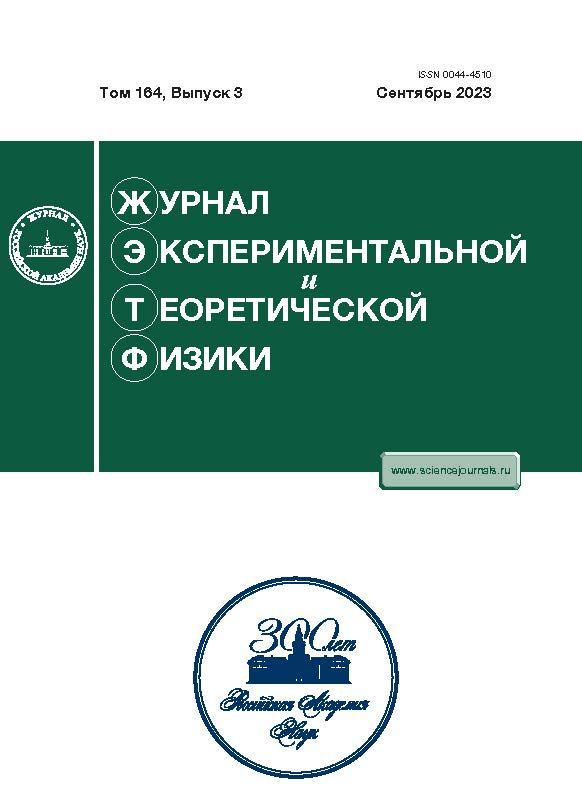Influence of Impurities on Adhesion at the TiAl/Al2O3 Interface
- Autores: Bakulin A.V.1, Kul'kov A.S.2, Kul'kova S.E.1,2
-
Afiliações:
- Institute of Strength Physics and Materials Science, Siberian Branch, Russian Academy of Sciences
- National Research Tomsk Sate University
- Edição: Volume 164, Nº 3 (2023)
- Páginas: 420-431
- Seção: Articles
- URL: https://archivog.com/0044-4510/article/view/653657
- DOI: https://doi.org/10.31857/S0044451023090110
- EDN: https://elibrary.ru/KDVKJB
- ID: 653657
Citar
Texto integral
Resumo
The influence of substitutional impurities on adhesion at the TiAl/Al2O3 interface with an oxygen termination has been studied by the projector augmented-wave method within the density functional theory. It has been shown that transition metals and a number of s,p-elements substituting for the interfacial titanium atom reduce adhesion, whereas Group VB and VIB elements enhance chemical bonding at the interface. The local densities of states, charge density distribution, overlap populations for interfacial atom bonding, and other electronic characteristics have been calculated that make it possible to reveal key factors influencing adhesion at the alloy–oxide interface. A correlation has been found between the influence of impurities on bonding energy at the inner and outer interfaces. A comparison of obtained data with those for the interface with Ti-enriched Ti3Al alloy shows that the interface loses strength with decreasing Ti content in the alloy.
Sobre autores
A. Bakulin
Institute of Strength Physics and Materials Science, Siberian Branch, Russian Academy of Sciences
Email: bakulin@ispms.tsc.ru
Tomsk, 634055 Russia
A. Kul'kov
National Research Tomsk Sate University
Email: bakulin@ispms.tsk.ru
Tomsk, 643050 Russia
S. Kul'kova
Institute of Strength Physics and Materials Science, Siberian Branch, Russian Academy of Sciences; National Research Tomsk Sate University
Autor responsável pela correspondência
Email: bakulin@ispms.tsk.ru
Tomsk, 634055 Russia; Tomsk, 643050 Russia
Bibliografia
- Z. Li and W. Gao, in Intermetallics Research Progress, ed. by Y. N. Berdovsky, Nova Sci. Publ., New York (2008), p. 1.
- J. Dai, J. Zhu, C. Chen et al., J. Alloys Compd. 685, 784 (2016).
- M. R. Shanabarger, Appl. Surf. Sci. 134, 179 (1998).
- V. Maurice, G. Despert, S. Zanna et al., Acta Materialia 55, 3315 (2007).
- T. Izumi, T. Yoshioka, S. Hayashi et al., Intermetallics 9, 547 (2001).
- L. Y. Kong, J. Z. Qi, B. Lu et al., Surf. Coat. Technol. 204, 2262 (2010).
- T. Sasaki, T. Yagi, T. Watanabe et al., Surf. Coat. Technol. 205, 3900 (2011).
- M. Sebastiani and E. Bemporad, Intermetallics 37, 76 (2013).
- J. Q. Wang, L. Y. Kong, T. F. Li et al., J. Therm. Spray Technol. 24, 467 (2015).
- J. Q. Wang, L. Y. Kong, T. F. Li et al., Appl. Surf. Sci. 361, 90 (2016).
- J. Q. Wang, L. Y. Kong, J. Wu et al., Appl. Surf. Sci. 356, 827 (2015).
- J. Huang, F. Zhao, X. Cui et al., Appl. Surf. Sci. 582, 152444 (2022).
- H. Li, L. Liu, S. Wang et al., Acta Metallurgica Sinica 42, 897 (2006).
- S. Y. Liu, J. X. Shang, F. H. Wang et al., Phys. Rev. B 79, 075419 (2009).
- H. Li, S. Wang, and H. Ye, J. Mater. Sci. Technol. 25, 569 (2009).
- S. Y. Liu, J. X. Shang, F. H. Wang et al., J. Phys.: Condens. Matter 21, 225005 (2009).
- Y. Song, J. H. Dai, and R. Yang, Surf. Sci. 606, 852 (2012).
- S. E. Kulkova, A. V. Bakulin, Q. M. Hu et al., Comput. Mater. Sci. 97, 55 (2015).
- L. Wang, J. X. Shang, F. H. Wang et al., Acta Materialia 61, 1726 (2013).
- S. E. Kulkova, A. V. Bakulin, and S. S. Kulkov, Comput. Mater. Sci. 170, 109136 (2019).
- A. V. Bakulin, S. Hocker, S. Schmauder et al., Appl. Surf. Sci. 487, 898 (2019).
- Y. Koizumi, M. Kishimoto, Y. Minamino et al., Philos. Mag. A 88, 2991 (2008).
- А. В. Бакулин, А. М. Латышев, С. Е. Kulkova, ЖЭТФ 152, 164 (2017).
- S. E. Kulkova, A. V. Bakulin, and S. S. Kulkov, Latv. J. Phys. Tech. Sci. 6, 20 (2018).
- А. В. Бакулин, С. С. Кульков, С. Е. Кулькова, ЖЭТФ 157, 688 (2020).
- E. Epifano and G. Hug, Comput. Mater. Sci. 174, 109475 (2020).
- D. Conn'etable, A. Prillieux, C. Thenot et al., J. Phys.: Condens. Matter 32, 175702 (2020).
- A. V. Bakulin, S. S. Kulkov, and S. E. Kulkova, Intermetallics 137, 107281 (2021).
- Y. Song, F. J. Xing, J. H. Dai et al., Intermetallics 49, 1 (2014).
- J. H. Dai, Y. Song, and R. Yang, Intermetallics 85, 80 (2017).
- B. Wang, J. Dai, X. Wu et al., Intermetallics 60, 58 (2015).
- Y. Li, J. H. Dai, and Y. Song, Comput. Mater. Sci. 181, 109756 (2020).
- A. V. Bakulin, S. S. Kulkov, and S. E. Kulkova, Appl. Surf. Sci. 536, 147639 (2021).
- А. В. Бакулин, С. С. Кульков, С. Е. Кулькова, Изв. вузов. Физика 63, 3 (2020).
- A. V. Bakulin, S. S. Kulkov, S. E. Kulkova et al., Metals 10, 1298 (2020).
- D. J. Siegel, L. G. Hector, Jr., and J. B. Adams, Phys. Rev. B 65, 085415 (2002).
- P. E. Bl¨ochl, Phys. Rev. B 50, 17953 (1994).
- G. Kresse and J. Joubert, Phys. Rev. B 59, 1758 (1999).
- J. P. Perdew, K. Burke, and M. Ernzerhof, Phys. Rev. Lett. 77, 3865 (1996).
- M. Lucht, M. Lerche, H. C. Wille et al., J. Appl. Cryst. 36, 1075 (2003).
- P. Villars and L. D. Calvert, Pearson's Handbook of Crystallographic Data for Intermetallic Phases, ASM, Materials Park, OH (1991).
- T. A. Manz and N. G. Limas, RSC Adv. 6, 47771 (2016).
- N. G. Limas and T. A. Manz, RSC Adv. 6, 45727 (2016).
- T. A. Manz, RSC Adv. 7, 45552 (2017).
- W. M. Haynes, CRC Handbook of Chemistry and Physics, 96th Edition, CRC Press/Taylor and Francis, Boca Raton, FL (2015), p. 9.
Arquivos suplementares










